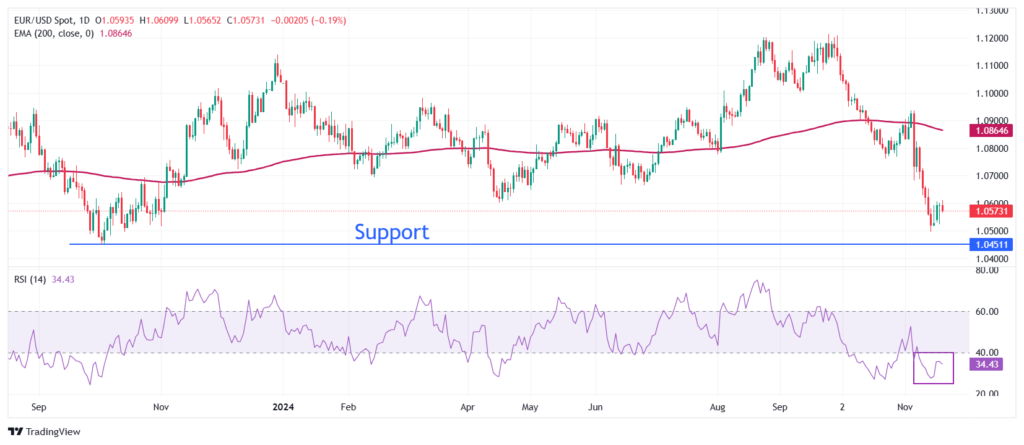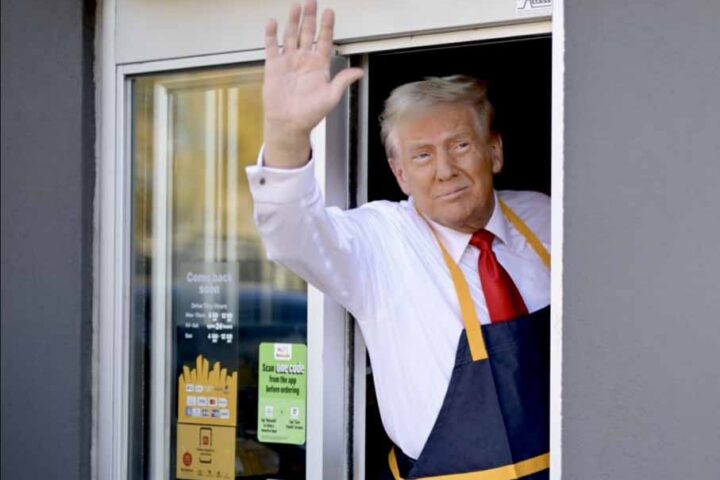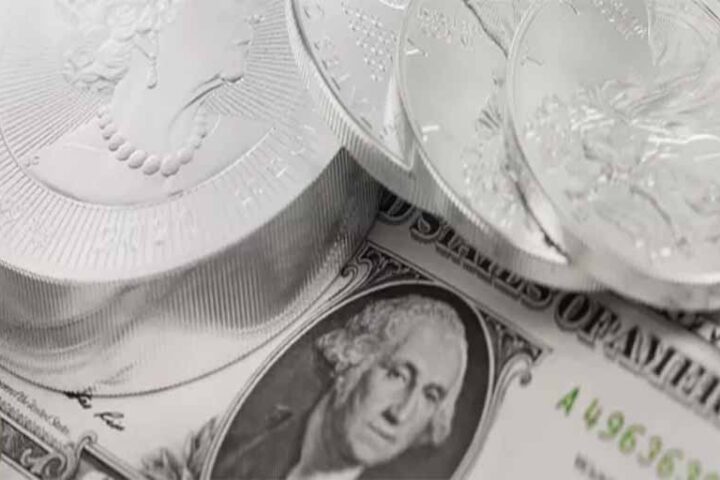EURUSD faces pressure near 1.0600 and fell to near 1.0560 Wednesday, as the major currency pair weakens and the US Dollar bounces back strongly on expectations of fewer interest rate cuts from the Federal Reserve in its currency policy-easing cycle.
Fed’s data-dependent approach is expected to refrain from cutting interest rates aggressively as market experts project a rebound in the US inflation and see economic growth accelerating, given that President-elect Donald Trump’s victory in both houses will allow him to implement his economic agenda smoothly.
Trump vowed to raise import tariffs universally by 10% and lower taxes, a move that would not allow the Fed to go for deeper rate cuts.
For the December meeting, the Fed will likely cut its borrowing rates by 25 basis points (bps) to the 4.25%-4.50% range, but the decision remains a “close call,” according to analysts at Deutsche Bank.
The DXY Dollar Index, which gauges the greenback’s value against six major currencies, bounced to near 106.30 from the immediate support of 106.10. The index exhibited sheer volatility on Tuesday due to fresh escalation in the Russia-Ukraine war.
The greenback gained in the European session on Tuesday as Russian President Vladimir Putin’s clearance to nuclear doctrine revision against Ukraine’s launch of long-range missiles, permitted and provided by the US on President Joe Biden’s approval, strengthened its safe-haven appeal.
However, the safe-haven demand lost steam after Russian Foreign Minister Sergei Lavrov said the country would “do everything possible” to avoid the onset of nuclear war, Reuters reported.
ECB officials are more concerned about preserving growth than taming price pressures, as Trump’s tariffs are expected to impact the overall output.
ECB policymaker and the Governor of the Bank of Italy Fabio Panetta said in a speech at Milan’s Bocconi University on Tuesday that, “with inflation close to target and domestic demand stagnant, restrictive monetary conditions are no longer necessary.”
He added that price pressures could remain well below the bank’s target if the economy doesn’t recover. When asked about his outlook on interest rates, Panetta said that the central bank needs to “focus on the sluggishness of the real economy” and push key borrowing rates into “neutral, or even expansionary, territory”, Reuters reported.
Meanwhile, the ECB also warned in its semi-annual Financial Stability Review report that “economic growth remains fragile.”
In this year’s last monetary policy meeting on December 12, the ECB is expected to cut its Deposit Facility Rate by 25 bps to 3%. This would be the fourth interest rate cut of the year and a third straight in a row.
On the economic data front, Eurozone Q3 Negotiated Wage Rates data came in higher at 5.42% from 3.54% recorded in the previous quarter, downwardly revised from 3.55%. Negotiated Wage Rates data is a wage growth measure that drives consumer spending.

EURUSD chart by TradingView
(Source: OANDA)







